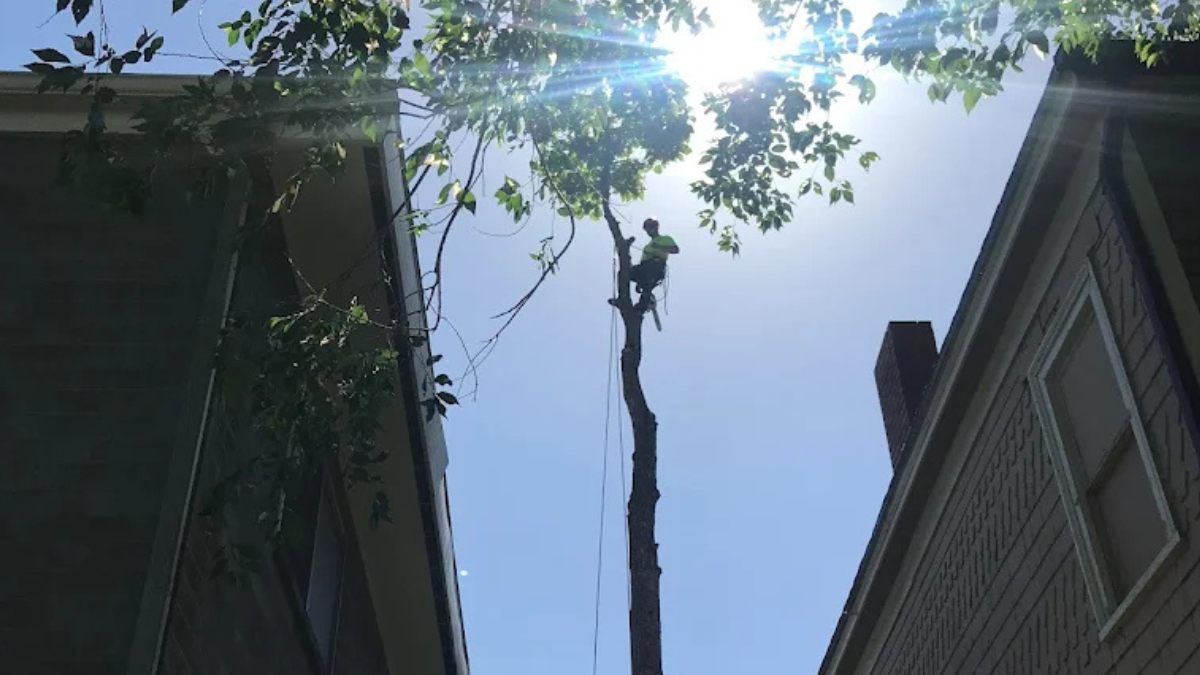You need a permit from Salt Lake City’s Urban Forestry Division to cut down most trees in public areas. Private property owners may need permits for heritage trees, protected species, or trees in conservation zones. Trees on federal land require special authorization from relevant agencies. These rules protect our urban forest and maintain South Salt’s green spaces.
Tree removal without proper permission can lead to hefty fines and legal trouble. Our certified arborists understand local regulations and help navigate the complex permit process. We ensure your tree removal follows all city guidelines.
This guide explains exactly what permissions you need before removing trees in South Salt. You’ll learn when permits are required and how to obtain them properly.

How to Know If You Need Permission to Cut Down a Tree in Salt Lake City
The first step is determining if your tree needs official approval before removal. Tree location, size, species, and health all affect permit requirements. South Salt has specific rules to protect its urban forest.
Contact the city before cutting any tree near public property. Many homeowners face fines because they didn’t check local regulations first. Our team helps clients navigate these requirements daily.
Contact the City Forester or Urban Forestry Division
Salt Lake City’s Urban Forestry Division handles all tree removal permits for public trees. They review applications and determine if removal is necessary. The division also provides guidance on tree care and replacement.
The city forester can tell you if your tree needs a permit. They maintain records of protected trees throughout South Salt. Most permit applications require professional assessment of the tree’s condition.
Research Salt Lake City Tree Protection Ordinances
Salt Lake City has specific local tree ordinances protecting certain trees. These laws cover trees based on size, species, location, and historical significance. The city code requires permits for trees in public rights-of-way.
You can find these ordinances online or at city offices. The rules change occasionally, so check current regulations. Fines for violations can exceed $1,000 per tree.
Assess Tree Health and Risk Factors
Dead or hazardous trees often qualify for expedited permits. An arborist assessment can document these conditions properly. The city requires proof before approving emergency removals.
Trees posing immediate danger may qualify for emergency permits. Document the hazard with photos and professional evaluation. This evidence supports your permit application.
Confirm Property Ownership and Tree Location
Trees on property lines create special permit challenges. Both property owners may need to approve removal. Trees in park strips typically belong to the city.
Check your property survey to confirm ownership. Trees within public rights-of-way require city permits. Private property trees have different requirements.
Why a Permit May Be Required Before Tree Removal
Permits protect valuable community assets and ensure proper tree management. Salt Lake City values its urban forest for environmental and aesthetic benefits. The permit process helps maintain these benefits.
Most permits require replacement plantings or fees. This system maintains the overall tree canopy. Permits also ensure proper removal techniques.
City Tree Preservation Laws and Local Ordinances
Salt Lake City’s tree protection bylaws preserve the urban forest. These rules protect trees based on size, species, and location. The city requires permits for most public tree removals.
The ordinances specify which trees need protection. They also outline the application process and fees. Violations can result in significant penalties.
Heritage, Landmark, or Specimen Tree Protections
Heritage tree protection covers historically significant or exceptional trees. These special trees receive extra protection under Utah law. Removing them requires approval from state agencies.
Heritage trees must meet specific criteria for age or significance. The Utah Heritage Tree Act protects these valuable specimens. Applications for removal must be submitted 60 days in advance.
Trees Located on Public Property or Shared Boundaries
Trees in park strips or public rights-of-way belong to the city. Removing these trees always requires an urban forestry permit. The city charges replacement fees based on trunk diameter.
Boundary trees may require permission from both property owners. The city also reviews these applications carefully. Proper documentation prevents neighbor disputes.
Conclusion
Tree removal permissions in Salt Lake City protect our valuable urban forest. Different rules apply based on tree location, size, species, and condition. Always check with local authorities before cutting any tree.
Diamond Tree Experts understands all local tree removal regulations. We help clients navigate permit requirements and complete proper applications. Our certified arborists provide the documentation needed for approval.
Contact Diamond Tree Experts for help with your tree removal needs. We ensure all work complies with local regulations while providing safe, professional service. Let us handle your tree removal project the right way.

